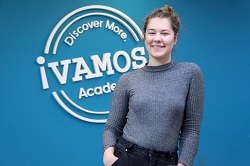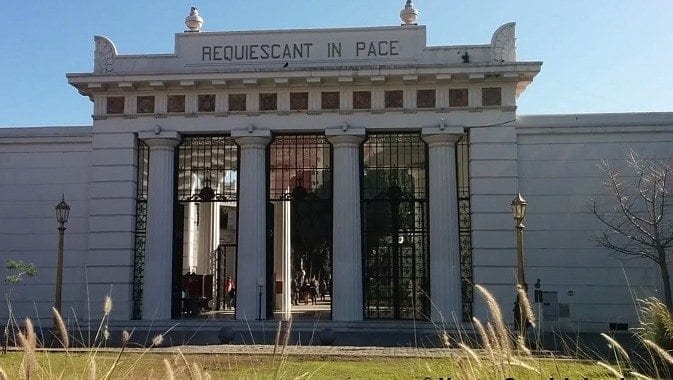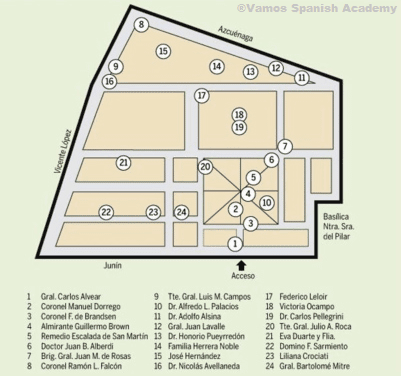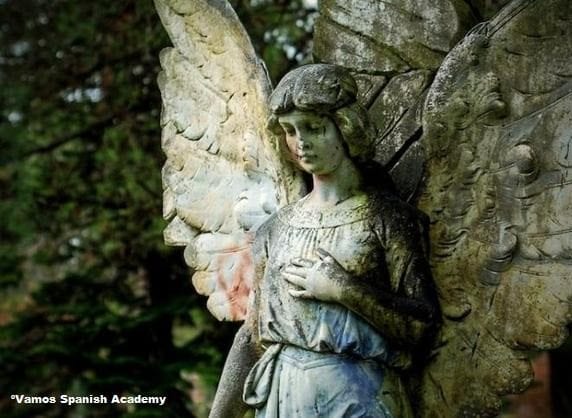Cementerio de la Recoleta
Table of Contents
- Exploreing the Historic Recoleta Cemetery in Buenos Aires
- Architectural Journey Through Recoleta Cemetery
- Artistic and Spiritual Sections of Recoleta Cemetery
- The Enchanting Urban Legends of Recoleta Cemetery
- Visiting Recoleta Cemetery: An Information Guide
- Recoleta Cemetery’s Notable Mausoleums
- Recoleta Cemetery in Popular Culture
- Recoleta Cemetery: A Haven of History and Serenity
- A Photographic Tribute to Recoleta Cemetery’s Beauty
- FAQ
- Q: What is the historical significance of Recoleta Cemetery?
- Q: How can I locate specific mausoleums or graves within Recoleta Cemetery?
- Q: What are the architectural styles represented within Recoleta Cemetery?
- Q: Is there an entrance fee to visit Recoleta Cemetery?
- Q: Who is Eva Perón and why is her grave a focal point in Recoleta Cemetery?
- Q: What types of tours are available at Recoleta Cemetery?
- Q: Are there any urban legends associated with Recoleta Cemetery?
- Q: Can photography be done in Recoleta Cemetery?
- Also Read: Famous Buenos Aires Ghost Story
Recoleta Cemetery (Cementerio de la Recoleta) is often listed as one of the most beautiful cemeteries in the world. After spending an afternoon wandering through the cobblestone streets lined with tombs I would have to agree. Recoleta Cemetery is located in the prestigious neighborhood of Recoleta, in the city of Buenos Aires. In the early eighteenth century Monks of The Order of the Recoletos arrived in this area. The cemetery originally started as their holy grounds, however when the Order disbanded in 1822, the convent gardens were converted into Buenos Aires´s first public cemetery. Buried here is a who’s who of notable Argentinians from politicians (including 26 Argentine presidents) to Nobel Prize winners, and of course Argentina’s beloved Eva Peron.
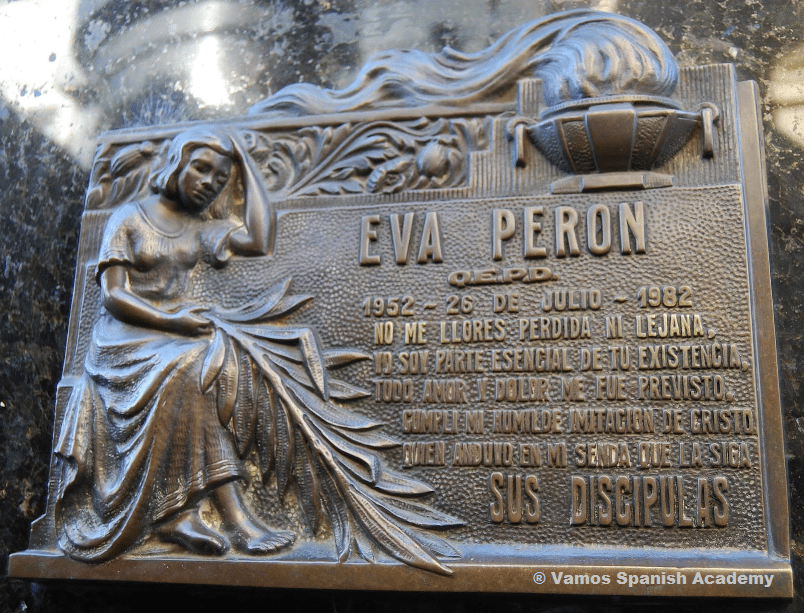

The cemetery has over 6,400 mausoleums and is a crash course of architectural style through the ages. Beautiful examples of Neoclassical, Neo Gothic, Art Nuevo and Art Deco can all be found here. With marble statues and decorative iron gates this city of the dead is full of breathtaking art. Some of the mausoleums are relatively new, modern even, while others show their age in dust and disrepair. Peeking inside the crypts was an unusual experience. You are faced with dusty, wooden coffins, carved marble coffins, shrines to the dead, relics, photos and flowers. All are evidence and a life, clues to who is buried there and who was left behind. I felt as if I were inside history when I stepped inside Recoleta Cemetery.
Of course no cemetery would be complete without a ghost story or two and Recoleta Cemetery is no exception. There are many stories of hauntings and curious happenings here. One of tales that resonated with me the most was the tragic story of 19-year-old Rufina Cambecéres, who was a socialite and the only daughter of a famous Argentine writer, died suddenly in 1902. It was raining on the day her casket arrived at Recoleta so it was left in the Chapel overnight. Legend has it that a cemetery worker noticed the casket lid had been shifted, and since Rufina was from a wealthy family, they thought someone might be after her valuables and have robbed the grave. However, when her casket was opened and closely examined, the truth was much worse. None of her jewelry was missing but instead, they found scratch marks on her and all over the inside of the casket: she had been mistakenly presumed dead and was buried alive! Later thought that she had collapsed from an attack of cataplexy, which caused several doctors to believe that she was dead. When she woke up and found herself sealed in a casket, the fright, the terror and the failed attempt of escape eventually gave her a heart attack which became the real cause of her unfortunate death.
To this day, no one knows for sure if that was really what truly happened but it is no doubt one of the most known urban legends of Recoleta Cemetery. The tomb of Rufina is is not easy to miss because it is one of the most beautiful ones in the “City of the Dead”. You will be greeted by a life-sized statue of her guarding her resting place. When peer in, you will see her beautifully-carved marble coffin inside.
Exploreing the Historic Recoleta Cemetery in Buenos Aires
Immersed in the heart of the distinguished Recoleta neighborhood, Recoleta Cemetery in Buenos Aires is not only a final resting place but a profound cultural landmark. Known as one of the most iconic burial sites in Argentina, the cemetery’s gates open to a dimension where historical cemetery grounds embrace the living with tales of the past. The intricate Recoleta Cemetery architecture paints a vivid picture across time, displaying ornate mausoleums and statues that have stood since the early 18th century.
This famous cemetery in Argentina is nestled within the city’s bustling confines and serves as an open-air museum, a testament to the nation’s narrative etched into every crypt and pathway. As a significant tourist attraction, the Recoleta Cemetery Buenos Aires offers visitors an unparalleled glimpse into the nation’s soul and the remarkable stories of the individuals who helped shape its identity.
The Transformation from Convent Gardens to Buenos Aires’ First Public Cemetery
Initially conceived as the gardens of the Monks of The Order of the Recoletos, Recoleta Cemetery’s transformation into Buenos Aires’ first public cemetery marked a pivotal moment in the recoleta cemetery history. Following the Order’s dissolution, the cemetery became a central piece of Argentina’s urban fabric and an embodiment of the nation’s social and political evolution.
Notable Burials: From Presidents to Nobel Laureates
The cemetery houses numerous notable graves in Recoleta Cemetery, making it not only a final resting place for individuals but a repository for collective memory. Amongst these are graves of historical figureheads, such as 26 Argentine presidents, literary pioneers, and researchers that have shaped the country. Distinguished figures like Luis Federico Leloir, a Nobel laureate, rest within these hallowed grounds, attributing a sense of reverence and pride for locals and international visitors alike.
Recoleta Cemetery as a Cultural Landmark of Argentina
As a cultural landmark, this historical cemetery stands testament to Argentina’s legacy, with its recoleta cemetery mausoleums reflecting a microcosm of the nation’s broader historical narrative and progress. The cemetery is symbolic of Argentina’s cultural richness, drawing in crowds who come to pay homage, explore, and ponder over stories of the notable individuals who helped forge the nation’s identity.
| Notable Individual | Contribution | Mausoleum Feature |
|---|---|---|
| Luis Federico Leloir | Nobel Prize in Chemistry (1970) | Elegant Classical Design |
| Carlos Pellegrini | Former Argentine President | Distinguished Neo-Gothic Architecture |
| Eva Perón | Iconic First Lady of Argentina | Simple yet Visited by Thousands |
| Adolfo Bioy Casares | Renowned Author and Screenwriter | Modernist Influence |
The Recoleta Cemetery’s influence extends beyond individual mausoleums encompassing collective experience and shared stories that form an integral part of the fabric of Buenos Aires, making it a poignant emblem of Argentina’s cultural heritage.
Architectural Journey Through Recoleta Cemetery
Wandering through the Recoleta Cemetery is akin to meandering through an open-air architecture museum, where each mausoleum stands as a sentinel to the past, narrating a story of architectural evolution. The beauty and diversity of the cemetery’s architecture invite admirers and scholars alike to soak in the splendor of its structural artistry. From stately Neoclassical crypts to ornate Art Deco tombs, the cemetery’s rich architectural tapestry illustrates a historical chronicle cast in stone and marble.
Reflections of History: Styles Spanning Neoclassical to Art Deco
The beautiful architecture Recoleta Cemetery offers is a direct reflection of Argentina’s cultural transitions and artistic influences throughout the centuries. As visitors journey through the grid of pathways, they are greeted by an array of architectural styles, such as the imposing Neoclassical mausoleums that evoke the grandeur of ancient civilizations, with robust columns and elaborate friezes. Moving through time, Recoleta Cemetery architecture also reveals sumptuous Art Nouveau details with its curves and naturalistic motifs, indicating an era of aesthetic innovation and creativity.
Diverse Mausoleums: Marble Statues to Modern Tombs
The cemetery architecture becomes even more varied as the path leads to sleek, geometric structures imbued with Art Deco sophistication. Among these grandiose memorials, one can find delicate marble statues capturing moments of angelic contemplation, alongside modern tombs with clean lines that signify the contemporary era’s design ethos. The mausoleums Recoleta Cemetery is renowned for are not only resting places for the dead but also architectural masterpieces Recoleta Cemetery proudly displays as a testament to its prestige as an iconic tourist attraction Recoleta Cemetery. Among them, the craftsmanship of French sculptor Jules Coutan stands out, his thoughtful works contributing to the eternal beauty that the cemetery embodies.
Artistic and Spiritual Sections of Recoleta Cemetery
Woven into the fabric of Buenos Aires, Recoleta Cemetery emerges not only as a key burial site in Recoleta, but also as a sanctuary beholding numerous spiritual landmarks. The sacred ground pulses with the religious significance of Recoleta Cemetery, rendering it a pilgrimage destination for those seeking solace amongst the stunning Recoleta Cemetery sculptures and ornate Recoleta Cemetery decoration. It is the quintessential resting place where each gravestone tells a tale, and each mausoleum stands as a monument to the departed souls it houses.
Here lie not only the earthly remains of prominent figures but also the tangible echoes of the Argentine spirit, encapsulated in time-resistant marble and stone.
Highlighted by its compelling collection of mausoleums, each structure is a testament to personal histories and societal contributions. The artistry found within its confines mirrors the city’s cultural narrative, underscored by breathtaking examples of Gothic architecture, which punctuates the cemetery skyline, harmonizing with the sky above.
| Sculpture Highlights | Architectural Styles | Spiritual Significance |
|---|---|---|
| Weeping angels and pensive statues | Gothic Revival mausoleums | Reflections of mourning and eternity |
| Bronze effigies of historical figures | Art Nouveau influences | Sites of pilgrimage and remembrance |
| Majestic Virgin Mary and sacred depictions | Neoclassical tombs | Symbols of hope and ascension |
The interplay of shadow and light across the cemetery’s many wonders further deepens the sense of peace and contemplation for visitors. As one strolls through this open-air museum, the narrative of a nation unfolds – one grave marker at a time. Recoleta Cemetery establishes itself as a profound intersection of art, history, and spirituality; a canvas upon which the stories of Argentina’s past generations continue to inspire and bear witness to the timeless dialogue between life and death.
The Enchanting Urban Legends of Recoleta Cemetery
Stepping into the Recoleta Cemetery is akin to walking through a portal of time where history whispers from every crypt and mausoleum. This storied necropolis, nestled in the affluent Recoleta neighborhood of Buenos Aires, captivates visitors not just with its architecture but also with its tapestry of chilling urban myths and ghost stories. Among these, some have transcended time, leaving an indelible mark on the Argentine folklore.
The Tale of Rufina Cambecéres: Buried Alive
One of the most spine-tingling historic tales of Recoleta Cemetery is wrapped around the tragic fate of a young woman named Rufina Cambecéres. Entwined with the macabre and the miraculous, her story has become a cornerstone of the cemetery’s urban legends. It’s whispered that she was mistakenly pronounced dead and buried alive, a fate so cruel that it continues to haunt the grounds. Visitors often seek out her ornate tomb, magnetized by the haunting tale that clouds the memory of her all-too-short life, making cemetery tours in Recoleta a blend of historical intrigue and supernatural allure.
The haunting tales of Rufina and others are not mere fabrications; rather, they form an essential component of the cemetery’s allure. Such ghost stories have propelled Recoleta Cemetery to be more than just a resting place for the dead; it is a vibrant cultural site where the deceased’s lives and the mysteries surrounding them are explored with reverence and curiosity. These legends serve as an eerie backdrop to the serene beauty of the place, making the cemetery in Recoleta a must-visit destination for those who seek to connect with the past in the most visceral way possible.
Whether you’re a skeptic looking to debunk myths or a believer eager to embrace the paranormal, the historic tales of Recoleta Cemetery are bound to leave an impression. As you wander through this labyrinth of the deceased, each mausoleum tells its own story, often rooted in fact but embroidered with legend. It’s these narratives that draw the line from mere curiosity to a deep-seated desire to unravel the secrets of the past, turning a visit here into a journey through the crossroads of history and mythology.
Visiting Recoleta Cemetery: An Information Guide
As one of the prime tourist attractions in Buenos Aires, Recoleta Cemetery captures the essence of the city’s rich history. Those planning a visit to this iconic resting place will find all the necessary information to ensure their trip is both memorable and enlightening.
Understanding Recoleta Cemetery’s Hours and Accessibility
Admission into the serene grounds of Recoleta Cemetery is available without the need for a recoleta cemetery entrance fee. The cemetery’s open gates invite visitors from dawn until dusk, aligning with Recoleta Cemetery opening hours that cater to early birds and sunset seekers alike. Its central location within the Recoleta neighborhood makes it an accessible stop on any Buenos Aires itinerary.
Navigating Recoleta Cemetery: The Importance of Maps and Tours
Embarking on a self-guided recoleta cemetery tour can be enriching, as the cemetery is a labyrinth of mausoleums and monuments. To navigate efficiently, a Recoleta Cemetery map can be obtained for a small fee. This tool proves invaluable for those on the lookout for notable gravesites or particular architectural marvels hidden within its confines.
Experience the Cemetery’s Ambiance: Day Trips versus Guided Tours
While the experience of wandering through the cemetery at one’s leisure is singular, the option to participate in recoleta cemetery guided tours showcases a deeper facet of the locale. These tours, provided free of charge, unlock a vault of narratives that encompass the lives and legends of those interred. A recoleta cemetery guided visit dives into the customs, anecdotes, and historical context that individual chiseled names might not convey, enriching the understanding of this poignant and historically significant site.
Recoleta Cemetery’s Notable Mausoleums
Amidst the labyrinth of history and granite in Recoleta Cemetery lies a treasure trove of notable tombs, each with a story carved into its facade. Visitors from around the world come not only to pay respects but to behold the monuments dedicated to some of Argentina’s most revered personalities. As an array of sculptures and motifs come into view, one cannot help but feel immersed in a realm where artistry and legacy interlace.
A Spotlight on Eva Perón’s Final Resting Place
The eternal home of Eva Perón—affectionately known as Evita—is perhaps the most visited and revered among the famous graves Recoleta Cemetery harbors. Nestled in the Duarte family mausoleum, Eva Perón’s grave is a pilgrimage site for those seeking to honor her enduring impact. Her influence resonates as powerfully in death as it did in life, inscribed in the hearts of the Argentinian people and reflected in the steady stream of admirers drawn to her burial site.
The Diversity of Tombs: Exploring the Variance in Memorials
Flourishing beyond a single narrative, the prominent tombs of Recoleta Cemetery encapsulate a spectrum of Argentina’s societal fabric. From military heroes and influential politicians to artists and philanthropists, the memorials bring forth a collective memory expressed through marble and stone. Each mausoleum stands as a testament to the individual lives that have shaped the nation’s path.
| Prominent Figure | Contribution | Architectural Style of Tomb |
|---|---|---|
| Eva Perón | First Lady, Social Advocate | Art Deco |
| Carlos Pellegrini | President of Argentina | Neo-Byzantine |
| Luis Federico Leloir | Nobel Laureate in Chemistry | Modernist |
| Rufina Cambacérès | Symbol of Tragic Youth | Art Nouveau |
With each visit, the Recoleta Cemetery attractions offer a unique encounter with the past, enriching our understanding of the figures who left indelible marks upon the world. As one traces the pathways between these notable tombs, there is an undeniable connection to the rich tapestry of Argentine history, rendered immortal in the silence of these storied stones.
Recoleta Cemetery in Popular Culture
The historical site Recoleta Cemetery has seamlessly woven itself into the fabric of popular culture, standing as a cultural landmark far beyond its role as a famous burial site. It’s this myriad of artistic interpretations that amplifies its stature as a Buenos Aires attraction beyond mere curiosity. Literature that delves into the depths of Argentine history often harks back to the imagery and symbolism that the cemetery provides, serving as both setting and subject for profound narratives.
In cinematic ventures, Recoleta Cemetery delivers a backdrop of such haunting beauty that it does much more than frame a scene—it breathes life into stories, both fictional and factual. Directors have found inspiration among its mausoleums, often using it as a poignant representation of Argentine identity and past. This famous cemetery has made appearances on the silver screen, casting an eternal allure over audiences worldwide, and etching its ghostly elegance into the grains of film history.
Photography too has seen the draw of Recoleta, with its labyrinthine lanes and statuesque angels providing endless muses for lenses aimed at capturing the delicate dance between temporal decay and timeless artistry. As a historical site, it offers a canvas that both challenges and charms photographers—both budding and established—asking them to reconcile the splendor of the cemetery’s past with the stark reality of its present.
- Novels set against the cemetery’s cryptic backdrop attempt to decipher the stories etched into its tombs
- Films extract from its ambience a mood that oscillates between melancholy and majesty
- Photographs portray Recoleta Cemetery’s weathered grace, ensuring its narrative endures in frames and galleries
Recoleta Cemetery’s reach in popular culture, thus, extends far and wide. From page to picture to the big screen, it endures as a focal point of inspiration. A testament to its status, it remains a place where art, history, and memory converge, commanding recognition not solely as a resting place for the noteworthy but also as a space where cultural heritage is celebrated, contemplated, and conserved for the generations to come.
Recoleta Cemetery: A Haven of History and Serenity
Stepping into Recoleta Cemetery transports visitors away from the energetic pulse of Buenos Aires into a world where history is etched into every corner and silence speaks volumes. As a premier Recoleta Cemetery tourist attraction, this historical burial site offers more than just a final resting place for the city’s elite; it provides a serene environment where the past merges seamlessly with the present.
The expansive Recoleta cemetery burial grounds serve as an unparalleled tour of Argentine history. Guided by the calm that pervades the location, a walk among the mausoleums becomes a meditative experience. Those seeking an in-depth exploration will find Recoleta cemetery guided visits both informative and moving, presenting anecdotes of the nation’s historical figures while allowing personal contemplation amidst the tranquility.
Serenity and respect are two pillars that define this peaceful retreat in the heart of the city. The peaceful attraction in Buenos Aires reveals itself not just as a site of remembrance, but also as a sanctuary for the living, fostering a unique connection between those who come to honor the past and those who find solace beneath its leafy boughs.
| Features of Recoleta Cemetery | Experience Offered |
|---|---|
| Historical Mausoleums | A walk through Argentina’s storied past |
| Artistic Monuments | Reflections on the country’s rich cultural tapestry |
| Tree-lined Pathways | A tranquil sojourn amidst nature and history |
| Guided Tours | An in-depth narrative of the cemetery’s permanent residents |
A Photographic Tribute to Recoleta Cemetery’s Beauty
As one of Buenos Aires’ most cherished historical sites, Recoleta Cemetery offers an unmatched tableau for both amateur and professional photographers. The cemetery’s allure lies in its striking architectural marvels and the emotive power of its statues and mausoleums. The intricate craftsmanship behind these structures transforms them into architectural wonders, creating a visual narrative that’s as compelling as the stories of those interred within its hallowed grounds.
Iconic Imagery: From the Angel Statues to the Lavish Mausoleums
Each walkway and crypt in Recoleta Cemetery presents a new opportunity to capture cemetery photography that resonates with the richness of Argentine heritage. Angel statues extend their wings as if to embrace the sky, while lavish mausoleums carved from the finest materials reflect opulence frozen in time. These images, representative of the top-rated cemetery Recoleta, continue to lure photography enthusiasts eager to encapsulate the beauty that permeates this storied locale.
Capturing Elegance and Decay: The Visual Dichotomy of Recoleta
The dichotomy of elegance and decay is a prevailing theme within the confines of Recoleta Cemetery. It is a place where the beautiful architecture Recoleta Cemetery is celebrated, while the relentless march of time is acknowledged through the patina of weathered stone and corroded metal. Engaging with cemetery tourism, photographers find that Recoleta leaves an indelible impression, bestowing a sense of timeless grace juxtaposed with the natural decline that comes with the ages. The cemetery’s architectural grandeur remains a reflective haven for those who visit, transcending the mere concept of a burial ground to become a monument to human legacy and creativity.
FAQ
Q: What is the historical significance of Recoleta Cemetery?
A: Recoleta Cemetery is significant as both a historical and cultural landmark. It is the first public cemetery in Buenos Aires and contains the graves of many notable Argentinians, including 26 presidents, Nobel Prize winners, and the beloved Eva Perón, making it a rich repository of Argentina’s history and heritage.
Q: How can I locate specific mausoleums or graves within Recoleta Cemetery?
A: While admission to Recoleta Cemetery is free, visitors can purchase a map for a nominal fee to aid in locating specific tombs. There are also free guided tours in Spanish and English which provide historical context and help visitors navigate the cemetery’s extensive grounds.
Q: What are the architectural styles represented within Recoleta Cemetery?
A: Recoleta Cemetery showcases a diverse range of architectural periods and styles, including Neoclassical, Neo-Gothic, Art Nouveau, and Art Deco. Over 6,400 mausoleums, adorned with marble statues and stunning ironwork, reflect the evolution of design and personal tastes of those interred there.
Q: Is there an entrance fee to visit Recoleta Cemetery?
A: No, there is no entrance fee to visit Recoleta Cemetery. It is open daily to the public, and visitors can explore the serene and historically rich grounds free of charge.
Q: Who is Eva Perón and why is her grave a focal point in Recoleta Cemetery?
A: Eva Perón, commonly known as Evita, was the First Lady of Argentina and a beloved figure for her work in advocating for the poor and working class. Her grave is one of the most visited sites in Recoleta Cemetery, drawing admirers from around the world due to her lasting impact on Argentine society and her iconic status.
Q: What types of tours are available at Recoleta Cemetery?
A: Recoleta Cemetery offers complimentary guided tours that provide insight into the cemetery’s art, history, and the stories of the influential people buried there. These tours are available in Spanish and English, offering both local and foreign visitors an educational and immersive experience.
Q: Are there any urban legends associated with Recoleta Cemetery?
A: Yes, Recoleta Cemetery is steeped in lore and urban legends, like the haunting tale of Rufina Cambecéres who was rumored to have been buried alive. Legends such as these add an air of mystery to the cemetery, making it a popular destination for those intrigued by historic tales and ghost stories.
Q: Can photography be done in Recoleta Cemetery?
A: Photography is allowed and encouraged in Recoleta Cemetery. The beautiful mausoleums, ornate sculptures, and angel statues offer ample opportunities for both professional and amateur photographers to capture the essence of this tranquil and historic site.
Also Read: Famous Buenos Aires Ghost Story
The cemetery is open every day from 8 am – 6 pm, free entry. Maps are available for purchase, though not necessary, I would recommend grabbing one if you want to find someone in particular. There are also free tours available. You will learn many stories like Rufina’s from the hour-long guided tour: Spanish tours – Tuesday to Friday at 11am; weekends and public holidays at 11am and 3pm. English tours are available on Tuesdays and Thursdays at 11am. Whenever you go, also keep your eyes on the lookout for the cutest and fluffiest “residents” of Recoleta Cemetery — the many cemetery cats.3
Recoleta Cemetery Photos

Entrance to the cemetery.
Notable and Famous People Buried in La Recoleta Cemetery (Wikipedia)
| Birth | Death | Personality | Notes | Ref(s) | |
|---|---|---|---|---|---|
| 1914 | 1999 |   | Adolfo Bioy Casares | Fiction writer, journalist, translator, and Miguel de Cervantes Prize recipient. | [18][19] |
| 1876 | 1943 | 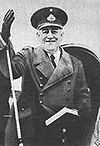  | Agustín Pedro Justo | President of Argentina. | [20] |
| 1921 | 2012 |   | Amalia Lacroze de Fortabat | Businesswoman and philanthropist. | [21] |
| 1805 | 1871 |   | Anthony Dominic Fahy | Catholic priest, missionary and head of the Irish community in Argentina (1844–1871) | [18] |
| 1914 | 1981 |   | Armando Bó | Actor, film director, and screenwriter. | [18] |
| 1900 | 1983 |   | Arturo Umberto Illia | President of Argentina. | [20][22][23] |
| 1821 | 1906 |   | Bartolomé Mitre | President of Argentina. | [20][24][25] |
| 1840 | 1902 |   | Cándido López | Soldier, painter, and student of Italian artist Baldassare Verazzi. | [26] |
| 1827 | 1918 | 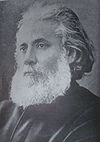  | Carlos Guido y Spano | Poet. | [27] |
| 1789 | 1852 |   | Carlos María de Alvear | Soldier, statesman, and Supreme Director of the United Provinces of the Río de la Plata. | [28] |
| 1846 | 1906 |   | Carlos Pellegrini | President of Argentina. | [20][29] |
| 1878 | 1959 |   | Carlos Saavedra Lamas | Academic, politician, and the first Latin American Nobel Peace Prize recipient. | [18] |
| 1759 | 1829 |   | Cornelio Saavedra | President of the First Assembly and military officer. | [30][31] |
| 1758 | 1820 |   | Cosme Argerich | Military physician. | [32] |
| 1800 | 1875 |   | Dalmacio Vélez Sársfield | Lawyer, politician, and writer of the Civil Code of Argentina. | [31] |
| 1811 | 1888 |   | Domingo Faustino Sarmiento | President of Argentina. | [20][27][33] |
| 1896 | 1956 |   | Eduardo Lonardi | President of Argentina. | [34] |
| 1903 | 1982 |   | Eduardo Mallea | Essayist, cultural critic, writer, and diplomat. | [35] |
| 1844 | 1913 |   | Eduardo Wilde | Physician, politician, and writer. | [36] |
| 1875 | 1951 |   | Elpidio González | Politician and Vice President of Argentina. | [37] |
| 1919 | 1952 |   | Eva Perón | First Lady of Argentina and founder of the Eva Perón Foundation. | [18][33][38] |
| 1788 | 1835 |   | Facundo Quiroga | Caudillo and subject of the book Facundo, Domingo Faustino Sarmiento‘s most prominent work. | [39][40][41] |
| 1785 | 1827 |   | Federico de Brandsen | French-born Colonel. | [42] |
| 1835 | 1899 | 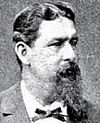  | Federico Lacroze | Businessman and railway entrepreneur. | [43] |
| 1795 | 1871 | 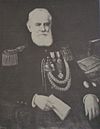  | Francisco Javier Muñiz | Argentine physician, naturalist and politician | [18] |
| 1821 | 1890 |   | Guillermo Rawson | Physician and politician of American descent. | [44] |
| 1852 | 1933 |   | Hipólito Yrigoyen | President of Argentina. | [20][22][23] |
| 1847 | 1847 | — | Isabelle Colonna-Walewski | Daughter of Count Alexandre Colonna-Walewski and grandchild of Napoleon. | [45][46] |
| 1842 | 1912 |   | José Clemente Paz | Statesman, diplomat, and journalist. | [17][47] |
| 1860 | 1931 |   | José Figueroa Alcorta | President of Argentina. | [20] |
| 1834 | 1886 |   | José Hernández | Journalist, politician, poet, and creator of Argentina’s national epic, the Martín Fierro. | [18][48] |
| 1910 | 1975 |   | José María Guido | President of Argentina. | [20] |
| 1758 | 1833 |   | Juan José Paso | Politician and member of the First Assembly, the First Triumvirate, and the Second Triumvirate. | [49] |
| 1797 | 1841 | 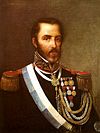  | Juan Lavalle | General and Governor of Buenos Aires Province. | [40][50] |
| 1793 | 1877 |   | Juan Manuel de Rosas | Brigadier and Governor of Buenos Aires Province. Initially buried at Southampton Old Cemetery in the United Kingdom, repatriated in 1989. | [24][33][51] |
| 1843 | 1914 |   | Julio Argentino Roca | President of Argentina. | [20][52] |
| 1841 | 1896 |   | Leandro Nicéforo Alem | Politician. | [22][23][37] |
| 1874 | 1938 |   | Leopoldo Lugones | Writer and journalist. | [19] |
| 1831 | 1913 |   | Lucio Victorio Mansilla | General, writer, journalist, politician, and diplomat. | [27] |
| 1894 | 1960 |   | Luis Ángel Firpo | Professional boxer and the first Latin American to challenge for the world heavyweight champion title. | [18][48] |
| 1906 | 1987 |   | Luis Federico Leloir | Biochemist, physician, and the first Spanish-speaking Nobel Prize in Chemistry laureate. | [18][40][53] |
| 1838 | 1907 |   | Luis María Campos | General and founder of the Escuela Superior de Guerra (Superior School of War). | [47][54] |
| 1822 | 1907 |   | Luis Sáenz Peña | President of Argentina. | [20] |
| 1791 | 1871 |   | Luis Vernet | German-born merchant of Huguenot descent and the first Argentine appointed as Governor of Puerto Luis (nowadays the Falkland Islands). | [55] |
| 1787 | 1828 |   | Manuel Dorrego | Military officer and Governor of Buenos Aires Province. Mausoleum designed by Carlo Zucchi. | [40] |
| 1835 | 1906 |   | Manuel Quintana | President of Argentina. | [20] |
| 1868 | 1942 | 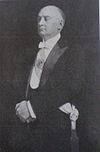  | Marcelo Torcuato de Alvear | President of Argentina. | [20] |
| 1887 | 1970 |   | Mariette Lydis | Austrian-born painter and illustrator. | [35] |
| 1786 | 1868 |   | Mariquita Sánchez de Thompson | Patriot. | [33][56] |
| 1922 | 1991 |   | Martín Karadagian | Actor, professional wrestler, and Wrestling Observer Newsletter Hall of Fame inductee. | [18] |
| 1851 | 1905 |   | Miguel Cané | Writer, lawyer, academic, journalist, and politician. | [48] |
| 1754 | 1833 |   | Miguel de Azcuénaga | General, politician, and member of the First Assembly. | [57] |
| 1783 | 1849 | 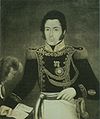  | Miguel Estanislao Soler | General and politician. | [58] |
| 1837 | 1885 |   | Nicolás Avellaneda | President of Argentina. | [20][24] |
| 1891 | 1967 |   | Oliverio Girondo | Poet. | [18][19][59] |
| 1859 | 1936 |   | Pablo Ricchieri | Military officer and Minister of War. | [60] |
| 1848 | 1929 | 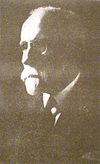  | Paul Groussac | French-born writer, literary critic, historian, and librarian. | [18] |
| 1903 | 1970 |   | Pedro Eugenio Aramburu | President of Argentina. | [61] |
| 1927 | 2009 |   | Raúl Alfonsín | President of Argentina. | [20][22][23] |
| 1926 | 2016 |   | María Lorenza Barreneche | First Lady of Argentina. Widow of Raúl Alfonsín. | [62][63] |
| 1797 | 1823 |   | Remedios de Escalada | Wife of libertador José de San Martín. | [33] |
| 1851 | 1914 |   | Roque Sáenz Peña | President of Argentina. | [20] |
| 1903 | 1993 | Silvina Ocampo | Poet, translator, and writer. | [18] | |
| 1802 | 1869 |   | Valentín Alsina | Governor of Buenos Aires Province. | [31] |
| 1785 | 1856 | 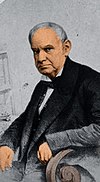  | Vicente López y Planes | Poet, politician, and creator of the lyrics of the Argentine National Anthem. | [64] |
| 1890 | 1979 |   | Victoria Ocampo | Writer, intellectual, and the first woman admitted to the Argentine Academy of Letters. | [18][48] |
| 1840 | 1919 |   | Victorino de la Plaza | President of Argentina. | [20] |
| 1777 | 1857 | 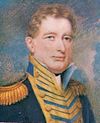  | William Brown | Irish-born Admiral and founder of the Argentine Navy. | [65][66] |
| 1856 | 1902 | 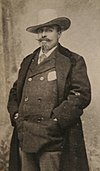  | Zenón Rolón | Musician and composer. | [67] |
| 1920 | 1999 | 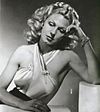  | Zully Moreno | Actress. | [18] |
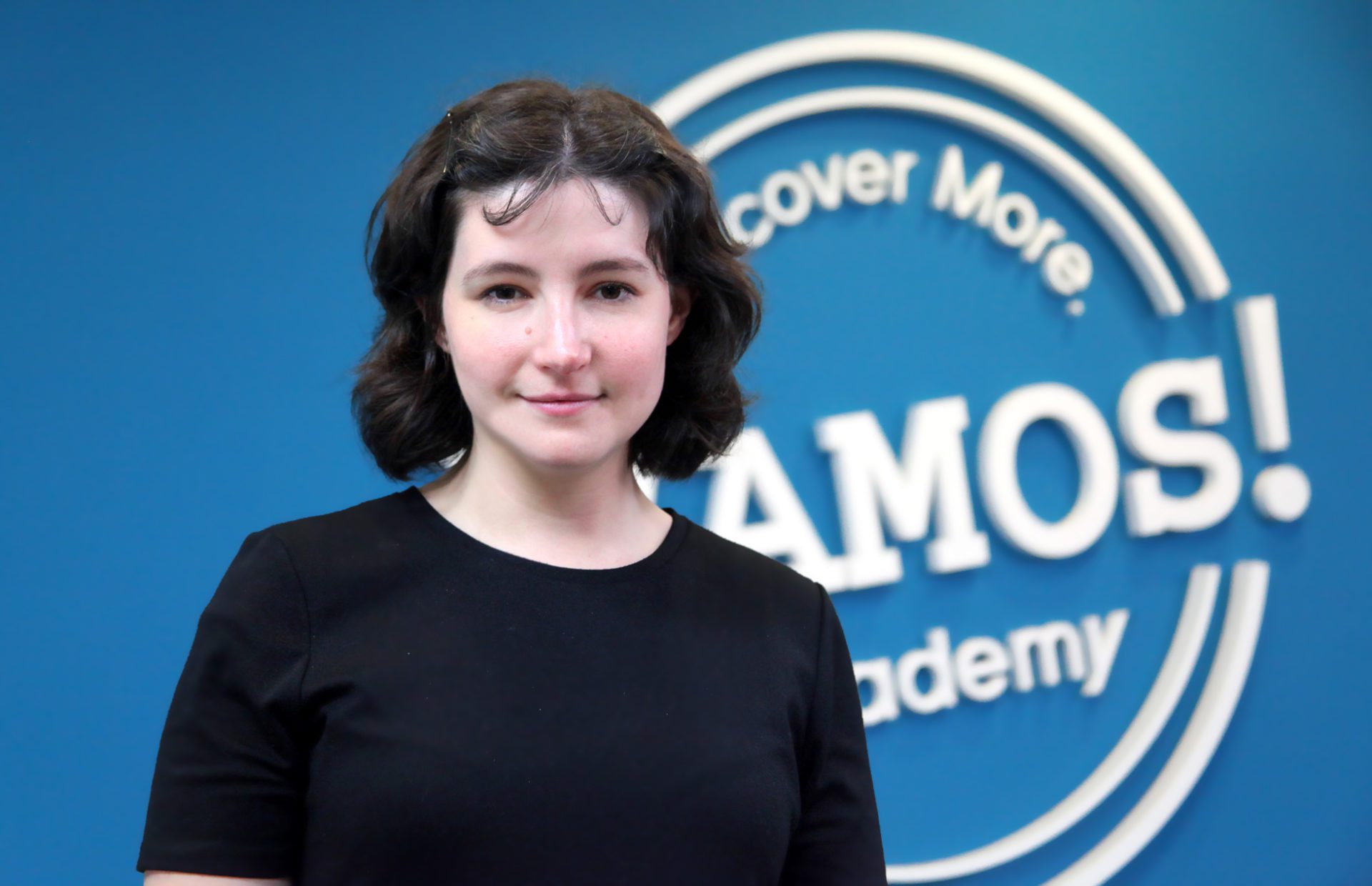

Maria Olson
At VAMOS Academy, I craft stories sprinkled with my love for exploration and food. Whether it’s the tang of a local dish or the rhythm of a new dialect, I bring these experiences to you. Ready for an adventure that tickles your taste buds and ignites your wanderlust? Let’s embark on this journey together, one story and one bite at a time.
If you want to learn more about our Spanish School Buenos Aires enter our website https://vamospanish.com or visit us at Viamonte 1516, Buenos Aires, Argentina +54-11-5984-2201 If you enjoyed reading our blog we would love if you could share it below. Thank you!

